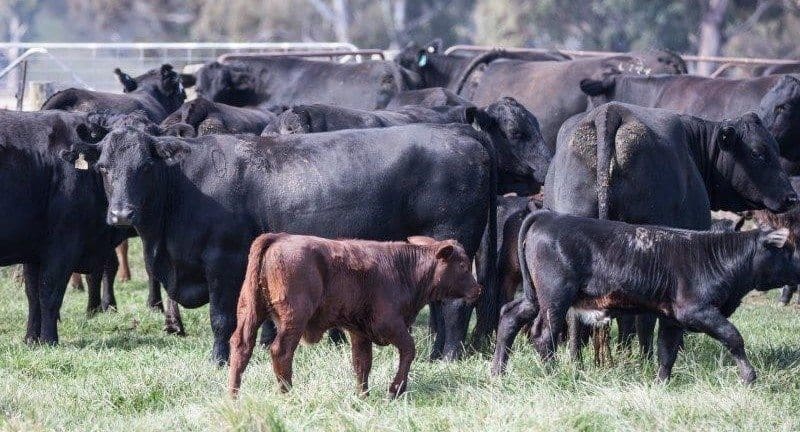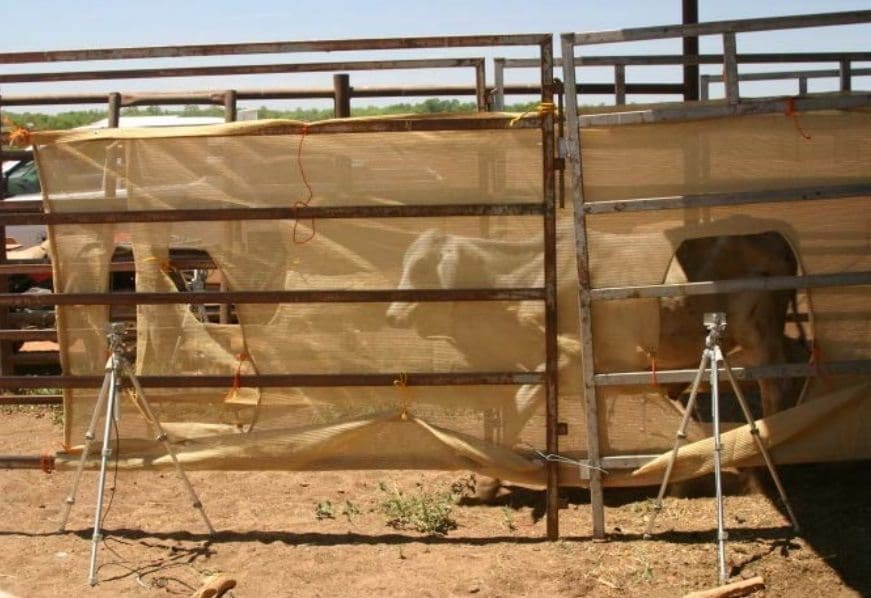
A Kansas State University study has linked docility with higher heifer fertility.
DO your most docile females get in calf sooner than your stirry ones?
While there appears to have been no Australian research yet carried out on this issue, a Kansas State University study has linked docility with higher heifer fertility.
Poor temperament in beef cattle creates safety issues for workers, increases time to settle-in and start gaining weight in feedlots, and can be a contributor to dark cutting.
Breedplan EBVs for docility were introduced in Limousin cattle in Australia almost 20 years ago, in a brave move by a breed organisation which identified a challenge. Rather than sweeping the problem under the carpet, Limousin breeders tackled it head-on, and according to reports, the move was successful.
Over the past decade Angus, Hereford and Simmental breeds have developed docility EBVs, but no work seems to have been done in Australia on the docility-fertility connection.
Some producers claim that fertility is the most important trait of all. “No calves, no income” is the cry. Body condition at joining, management of joining programs and bull fertility are major contributors to the complex issue of increasing pregnancy percentages.
The Kansas State U trial looked at the relationship between docility and first-service conception rates in 337 Angus heifers in three herds. Crush flight times, cortisol readings (cortisol is a hormone mainly released in animals under stress), heifer weights and ages were recorded to align with a 30 day post AI pregnancy test.
Pregnancy rates in the three herds ranged for 34pc to 60pc.
While the research did not return strong answers when the results from the three herds were combined, in one herd, crush flight times and body weight were significant predictors of 30-day pregnancy rates. In that herd, a single unit increase in flight crush score (more flighty) reduced the probability of pregnancy by 48pc.
Interestingly, the findings from this particular herd challenged the long-held theory that heifer body weights were good indicators of being ready to join. In this herd, researchers predicted that a one kilogram increase in body weight decreased the probability of pregnancy by 2.2pc.
The weight range of the heifers in the trial was 163kg to 437kg, with an average of 346kg, while the ages ranged from 12 to 15.5 months with an average of 14 months.
Agriculture Victoria lists optimum joining age of 15 mths with minimum weights of 270 to 280 kgs for British breeds and 320 kgs for European breeds. Recommendations for bos Indicus breeds would be in the same range as British breeds.
The researchers concluded that while fertility is a complex trait dependent on multiple factors, interaction between temperament and reproductive success merits further investigation, and could prove conclusive with a data set of sufficient size.

Measuring temperament using flight speed in Brahman weaners exiting the crush, tripping two light beams (tripods).
Relevant traits
Traits relevant to this story that currently have Australian EBVs are:
Scrotal size:
Scrotal Size EBVs are estimates of the genetic differences between animals in scrotal circumference at 400 days of age. Scrotal Size EBVs are expressed in centimetres (cm) and are calculated from scrotal circumference measurements taken on bulls between 300 and 700 days of age.
Increased scrotal circumference is associated with increased semen production in bulls, and earlier age at puberty of bull and heifer progeny. It also has a favourable relationship with days to calving, such that bulls with larger scrotal circumference tend to have daughters with shorter days to calving.
Larger, more positive, Scrotal Size EBVs are generally more favourable. For example, a bull with a Scrotal Size EBV of +4 cm would be expected to produce sons with larger testicles at yearling age and daughters that reach puberty earlier than the progeny of a bull with a Scrotal Size EBV of -4 cm.
Days to Calving:
Days to Calving EBVs are estimates of genetic differences between animals in time from the start of the joining period (i.e. when the female is introduced to a bull) until subsequent calving. Days to Calving EBVs are expressed in days and are calculated from the joining records submitted for females.
The Days to Calving EBV promotes those cows that calve earlier in the season compared to those that calve later, while penalising those cows that do not calve. Variation in days to calving is mainly due to differences in the time taken for females to conceive after the commencement of the joining period.
Lower, or more negative, Days to Calving EBVs are generally more favourable. For example, a bull with a Days to Calving EBV of -5 days would be expected to produce daughters that conceive earlier in the joining period than the daughters of a bull with a Days to Calving EBV of +5 days. Females with shorter Days to Calving EBVs also tend to be those that show early puberty as heifers and return to oestrous earlier after calving
Docility
Docility EBVs are estimates of genetic differences between animals for temperament. Docility EBVs are expressed as differences in the percentage of progeny that will be scored with acceptable temperament (i.e. either “docile” or “restless”) and are calculated from temperament scores recorded on animals using either a crush or yard test when the animals are between 60 and 400 days of age (preferably at weaning).
Docility in cattle is the way cattle behave when being handled by humans or put in an unusual environment such as being separated from the mob in a small yard. What we define as poor docility is a survival trait in the wild – fear of anything unusual and the desire to escape. In domesticated cattle it is exhibited as flightiness. Importantly, docility is a highly heritable trait and so can be improved genetically.
Higher, more positive, Docility EBVs are more favourable. For example, a bull with an EBV of +4.0pc would be expected to on average produce a greater percentage of progeny that have acceptable temperament than a bull with an EBV of –2.0pc.
Flight Time
Flight Time EBVs are another estimate of genetic differences between animals for temperament. They are expressed as differences in the number of seconds taken for an animal to travel approximately 2.0 metres after leaving the crush and are calculated from flight time measurements that have been recorded on animals using specialised flight time equipment.
Flight time is a simple, cost-effective and easy-to-record objective measurement of temperament. Research has shown that in addition to the obvious benefits for ease of handling and management, animals with longer flight time (ie. superior temperament) also have superior meat tenderness.
Higher (ie. longer) Flight Time EBVs are more favourable. That is, higher EBVs indicate a longer time taken to exit the crush and hence better temperament. For example, a bull with an EBV of +0.80 would be expected to on average produce progeny that took 0.7 of a second longer to exit the crush than a bull with an EBV of -0.60.
